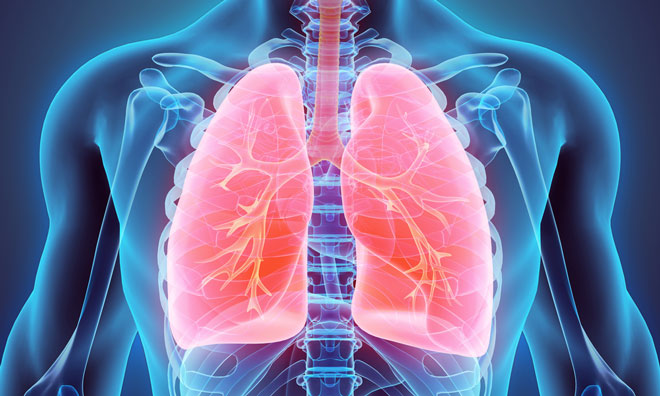ATRAG formulations for lung disease
Posted: 14 August 2023 | Caroline Peachey (European Pharmaceutical Review) | No comments yet
Carl-Johan Dalsgaard, CEO of Vicore Pharma speaks to EPR about clinical trials of C21, an angiotensin II type 2 receptor agonist developed to treat rare lung diseases – and the first ever ATRAG to reach clinical-stage development.


Swedish pharmaceutical company Vicore Pharma is developing treatments for diseases where the angiotensin II type 2 receptor (AT2R) has a central role in stopping and reversing disease pathology and where there is a large unmet medical need. The company’s lead candidate, C21, is an angiotensin II type 2 receptor agonist (ATRAG). It represents a new class of drugs capable of reducing pulmonary inflammation, proliferation, fibrosis, and vasculopathy.
C21 is currently in Phase II clinical development for treatment of Idiopathic Pulmonary Fibrosis (IPF), a condition in which the lungs become scarred and breathing becomes increasingly difficult.
Vicore’s C21 is the first ever ATRAG reaching clinical stage”
“The AT2 receptor has been known for quite some time, but from a clinical point of view, it is a novel target, and Vicore’s C21 is the first ever ATRAG reaching clinical stage,” says Carl-Johan Dalsgaard, CEO of Vicore Pharma.
Reflecting on recent clinical milestones, Dalsgaard noted that in February Vicore presented efficacy data from its ongoing Phase II2a AIR clinical trial of C21 in IPF. This data, together with a favourable safety profile, make C21 a potential game-changer for IPF patients, particularly those who are currently not treated due to the side effects of the available drugs, according to Dalsgaard.
In May, Vicore reported new 36-week data from the AIR multi-centre clinical trial in a presentation at the American Thoracic Society (ATS) international congress.
With 51 patients enrolled in open label, single arm trial, Vicore says the trial data “demonstrates that C21 has the potential to transform the treatment of IPF and restore lung function.” The disease is currently considered to be incurable and inevitably progressive.
For example, at 36 weeks the average Forced Vital Capacity (FVC – a measure of lung capacity) of patients treated with C21 had increased to +350 mL over baseline, which is +530 mL over the expected trajectory of untreated patients (n= 19; p=0.001).
The magnitude of FVC stabilisation seen with C21 in the AIR trial is very different from what we normally see in clinical practice
Commenting on the significance of the findings, Professor Toby Maher, Keck School of Medicine at University of Southern California, stated: “The magnitude of FVC stabilisation seen with C21 in the AIR trial is very different from what we normally see in clinical practice and certainly gives hope for patients.”
He added that if data are replicated in the planned Phase IIb ANDAS trial, “there will be a fundamental change in how IPF is treated with an opportunity to stop progression and restore lung function.”
What are ATRAGs and how do they work?
The angiotensin II type 2 receptor agonist and the AT2 receptor represent an important component of the so-called renin-angiotensin-system.
Dalsgaard describes the system as an ancient “trauma rescue system,” with the main purpose of preventing blood pressure falling to levels, for example after injury with major blood loss. The main pathway for this is that the hormone angiotensin II binds to and activates the angiotensin type 1 receptor which leads to constriction of blood vessels and reduced fluid losses from the body. Activation of this type 1 receptor also promotes inflammation and thereby helps the immune system to fight infections, also common after injuries.
One drawback, however, is that the AT1 receptor pathway can overshoot and cause conditions eg, hypertension. There are several anti-hypertensive blood pressure drugs that either block the formation of angiotensin II or block the AT1 receptor.
This type 1 system has a parallel pathway that basically does the opposite via the angiotensin II type 2 receptor, the target of Vicore’s ATRAGs. Activating the AT2 receptor triggers resolution of tissue damaging processes and promotes repair in the damaged tissues, and this includes vasodilatory, anti-inflammatory and anti-fibrotic effects.
Developing and manufacturing C21
“ATRAGs represent a new class of drugs with enormous clinical and commercial potential considering that they activate a protective endogenous system of relevance for a long range of indications with unmet needs, including pulmonary, cardiovascular, renal, metabolic and CNS diseases,” Dalsgaard stated. C21 was also trialled in a study for patients with COVID-19.
In addition to the ongoing clinical trials above Vicore Pharma has initiated clinical proof-of-concept study of endothelial dysfunction – a key driver of organ damage associated with many diseases. Restoration of endothelial function may be both therapeutic and serve as an early efficacy biomarker in pulmonary, renal, vascular and several other diseases.
Reflecting on the development process, Dalsgaard highlighted a key challenge for small pharma companies: not being able to time-optimise the development path.
“To minimise gaps, investments for the next development phase are traditionally taken early, and back-up strategies are being executed in parallel tracks,” explains Dalsgaard. Vicore is shortening the development timelines and decreasing risk by having a collaborative operating model, an agile, creative and goal-oriented working environment, he adds.
Dalsgaard told EPR that 25kg pilot batches of the therapeutic have been produced without issues and Vicore expects scale-up to proceed successfully
When questioned about the manufacturing of the C21, Dalsgaard told EPR that 25kg pilot batches of the therapeutic have been produced without issues and Vicore expects scale-up to proceed successfully. The six-step C12 synthesis process is patent protected in the US and Europe, with patent applications filed in Japan, China and elsewhere.
The European Patent Office (EPO) granted Vicore’s patent (EP 4 138 789 B1) protecting an improved C21 formulation based on enteric coated compositions. The patent protects any form of enteric coating of C21 in Europe and is expected to last at least until 2041. The equivalent US patent was granted by the United States Patent and Trademark Office (USPTO) in June.
Commenting on the milestone Dalsgaard stated: “We are very pleased that this patent, providing strong protection for C21 in all diseases, has now been granted in both Europe and in the US. The European IPF market alone represents a large opportunity with 100,000 diagnosed patients. The combined US and European IPF market represent $3bn in annual sales. This patent also allows us to explore wider pulmonary fibrosis indications outside IPF as well as pulmonary hypertension.”
About the Interviewee


Related topics
Clinical Development, Clinical Trials, Drug Delivery Systems, Drug Development, Drug Manufacturing, Drug Safety
Related organisations
European Patent Office (EPO), Keck School of Medicine, Vicore Pharma









